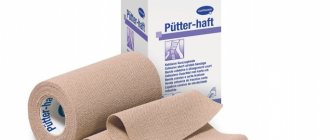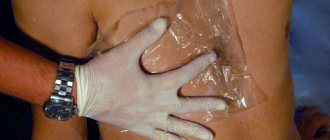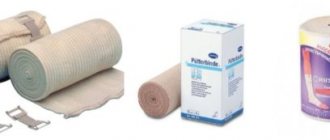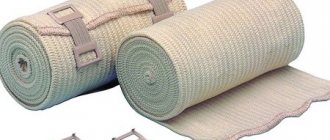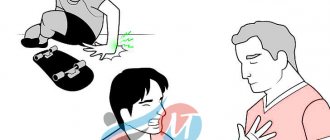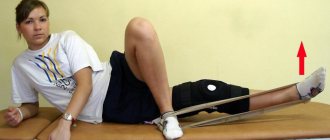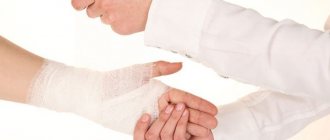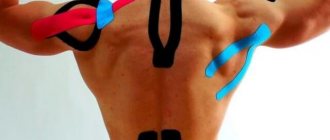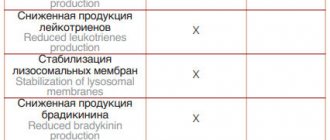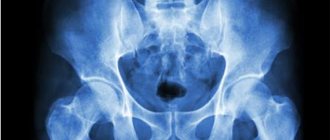Do you know what DESMURGY is???
Desmurgy - (from the Greek desmos - bandage, ergon - business) a section of general surgery that studies various types of dressings.
This science, as you understand, is thousands of years old - ever since something human awoke in primitive man and he wanted to help himself and his fellow tribesman heal their injury faster. Let me clarify, something more advanced than simple licking - for example, I tried to tie a stick to a broken limb.
Since then, desmurgy has come a long way of improvement, divided into 2 stages - up to antiseptic and antiseptic, modern, when people learned something about pathogenic bacteria and learned to prevent them from entering wound surfaces.
The bandages themselves were also improved - both the technique of applying them and the very material from which they were made. First, knitted bandages appeared, and then an elastic bandage.
Elastic bandages are a rather complex product created for repeated use. Using various technologies, an elastic thread, such as latex, is wrapped in a single or double layer of cotton or synthetic thread. And from these “threads” the bandage itself is woven.
However, before you buy or wrap an elastic bandage, carefully study its packaging: elastic bandages, in addition to length and width, have different degrees of elongation - low, medium and high. These elastic bandages are used in various situations:
- Low-extensibility bandages (extensibility of at least 30%) are used to treat complicated forms of chronic venous insufficiency and deep vein thrombosis; provide quick application of bandages when providing first aid; provide convenient and reliable fixation of dressings on affected areas of the body.
- Medium extensibility bandages (extensibility of at least 100%) are used for the treatment of varicose veins, diseases with trophic complications, and for the treatment of postphlebitis syndromes. Recommended for maintaining soft tissues after plaster removal and compression sclerotherapy.
- Highly tensile bandages (extensibility of at least 150%) are used for the treatment of varicose veins of I and II degrees, for the treatment of lipodermic diseases; used in the postoperative period for lymphedema, to maintain joints at rest after injuries and operations; recommended for bandaging bedridden patients.
How to tie an elastic bandage correctly
The question: “how to tie an elastic bandage” can be answered very briefly - just like a simple bandage. Those. dressing with an elastic bandage should follow the schemes developed for dressing with a regular bandage.
Of course, there is a difference, it consists in the huge advantage of an elastic bandage - by creating additional continuous pressure (compression) perpendicular to its surface, it leaves soft tissues and joints the opportunity to move and function within certain limits.
This quality of the elastic bandage allows it to be used both for securing bandages and for treating injuries to the musculoskeletal system and diseases of the vascular and lymphatic systems. How to properly apply an elastic bandage
Before using an elastic bandage, let's consider the basic dressing schemes and the goals they serve.
Circular bandage.
We hold the edge of the bandage with our left hand, and with our right hand we make several rounds at the same level - as a rule, this is how they begin to apply an elastic bandage.
Spiral bandage - ascending and descending.
With an upward spiral, an elastic bandage is applied from bottom to top. With a downward spiral, you need to apply an elastic bandage from top to bottom: This is how you bandage your shin, hand or chest. Each subsequent round overlaps the previous one by about 1/3
Creeping bandage
Very often we have to solve the following problem: how to properly apply an elastic bandage to a large surface. For example, the whole leg. To do this, you need to apply the bandage in two layers. In the first, we use a method similar to a spiral, but we do not overlap the previous round, but move away from it at a certain distance equal to the width of the bandage. And in the opposite direction we bandage or spiral, or some other method recommended by the doctor.
Cross-shaped (eight-shaped) bandage.
How to properly apply an elastic bandage to an ankle joint or knee is shown in the pictures below:
Spica bandage (a type of figure eight).
When applying it, the crosses are located along one line and are shifted at each round by ½ - 1/3 of the width of the bandage. The spica bandage recommends how to apply an elastic bandage to such dissimilar parts of the body as the first finger of the hand, shoulder and hip joints.
Turtle headband.
Bandaging the knee, elbow and heel with an elastic bandage is the most common procedure in everyday life.
Take a close look at the picture below, this is the so-called “Turtle” bandage for the knee joint:
Left and center - we wrap an elastic bandage towards the center, this is a “converging” tortoiseshell bandage. But on the right we wrap an elastic bandage in “up and down” circles from the center - this is a diverging turtle bandage.
You can use an elastic bandage on the elbow joint in the same way.
But you need to figure out how to wrap an elastic bandage around your heel. We make 2 circular fixing rounds on the shin above the ankle and along the oblique side of the back of the foot we go to the ankle joint and fix it with a circular round. Now along the inside we go above the heel and again secure it in a circular manner:
To avoid a loose fit of layers 2 and 3, they are secured with an additional oblique bandage 4, running from the back surface of the ankle joint down and anteriorly to the outer lateral surface of the foot. Then they continue to apply diverging rounds of the tortoiseshell bandage. The bandage ends in circular circles in the lower third of the shin above the ankles.
No. 1. Prevention of sprains: simple rules
People who play sports often experience muscle strains. Under the influence of excessive loads, the muscle is stretched, separated from the tendons, and the tissue is damaged. This happens when doing flexibility exercises, when running and even when walking.
To avoid sprains and protect the ankle from arthrosis, you must:
- fix the problem muscle with an elastic bandage during a potentially dangerous period;
- before training, pay special attention to warming up;
- increase the load gradually and give the muscles time to recover - take days without exercise;
- additionally train flexibility - consult a specialist which exercises will be the safest for you;
- monitor your posture, since sprains often occur due to improper load distribution;
- add enough calcium, magnesium and iron to your diet;
- provide the body with enough moisture to keep the muscles elastic.
Elastic bandage - good prevention of muscle strains
Fractures of the ankle joint.
The main reasons for an ankle fracture are an object falling on the foot or an unsuccessful landing after a jump. As a result of a fracture of the posterior part, one can observe displacement of fragments that cut into and disrupt blood circulation; this can lead to complete atrophy of the muscles of the foot itself. The most important symptoms are severe pain and swelling, and if you press very lightly on this area, acute pain is felt, in which case you need to urgently seek qualified help, the sooner the better, before swelling appears. In this case, it is better not to move the limb at all, but to raise the leg.
If the heel bone is broken, swelling immediately appears, the foot flattens, the Achilles tendon flattens and the heel begins to expand. Even minimal pressure leads to acute pain.
When the metatarsal bones located in the front part are fractured, the pain intensifies with minimal pressure on the back of the foot. Bruising quickly appears on both sides and severe swelling on both sides of the foot.
As a result of finger injuries, damage to the skin is often observed. There is hemorrhage under the skin, and hellish pain is monitored. If a phalanx fracture does occur, the provision of assistance has its own characteristics:
- First you need to immobilize your fingers with an adhesive plaster.
- you need to use a wide adhesive plaster that wraps around your finger several times.
- If the integrity of more than one finger is damaged, each of them is processed individually.
What is a compression bandage and how does it work for ankle injuries?
Russian compression bandage is an elastic woven tape made of latex, cotton and polyester fiber. The Intex medical bandage is stretchable, so it allows you to apply tight bandages that almost do not slip and do not interfere with walking.
The bandage contains cotton, so the elastic bandage is soft, fully ventilated and washable. The elastic bandage "Intex" relieves ligaments and muscles , stabilizing the foot in the correct position relative to the shin bones. Since the bandage makes it easier to put weight on your leg, walking is less painful and inconvenient. The likelihood of re-dislocation or worsening the injury is reduced.
When applied correctly, a compression bandage creates distributed pressure on the lower leg area. External pressure promotes the outflow of blood from the area of the foot and lower leg and stimulates the functioning of the lymphatic system. The vessels remove lymph and the liquid part of the blood from the soft tissues, so post-traumatic swelling quickly decreases .
Ligament damage
The most common injury to the ankle ligaments occurs as a result of bruising of the joint or ligaments; sharp pain and swelling in the ankle area are observed, while movement becomes limited. There are cases when the victim can step on his foot almost immediately, but as a result, this can lead to more serious consequences.
First of all, you need to apply ice and raise your leg, secure it with a tight bandage. For fixation, use an elastic bandage or a special joint fixator.
Sports medicine uses the term taping, which involves the use of wide adhesive tape, which provides more serious fastening.
Also, pneumatic splints, which are placed on the joint after a strong blow or when there is swelling around the joint, deserve great popularity. These tires are inflated and completely neutralize the possibility of movement. Very often these tires have coolant packs in them. After a ligament rupture, not only pain and swelling are monitored, but also bruising. If it is small, this means that the ligaments are selectively damaged: in this case, applying a tight bandage will suffice. If the hemorrhage is more severe, it is necessary to use a splint and seek qualified assistance.
For dislocation and fracture in the ankle area
When performing movements that significantly exceed the working amplitude of the joint, and at the same time insufficient strength of the ligaments is monitored, dislocation of the joint occurs. The joint emerges from a “fork” that is formed by the ends of the lower leg bones.
In this case, soft tissues, nerves, and blood vessels are damaged, and open wounds may form.
An open dislocation entails quite severe injuries with soft tissue ruptures. During treatment, first of all, you need to apply a sterile bandage. If soft tissue damage is not monitored, the limb should simply be fixed in one position.
Without anesthesia of the ankle, it is forbidden to reset the dislocation on your own, and you also cannot put any weight on the injured leg. In this case, the victim must be sent to the emergency room as quickly as possible.
An open fracture is accompanied by tissue damage and bleeding. First, you need to stop the blood loss with a tourniquet, then you need to apply a sterile bandage and ensure complete rest for the joint.
Applying a bandage.
Types of dressings: bandage, scarf, adhesive plaster.
When providing first aid with a bandage, the easiest way is to make a reversible bandage: in this case, the toes need to be separated using cotton wool, then several circles are made around the ankle, then the roll of the bandage is held vertically and the foot is wrapped along the inner surface around the toes, making a couple of circles such revolutions that it allows you to completely neutralize the foot. The bandage is secured to the ankle on all sides, but the ankle should not be overtightened. If you need to bandage your thumb, you need to use a bandage up to 5 cm wide: wrap it around your finger several times. The bandage is wrapped around the ankle, then passed back to the big toe and secured to the ankle.
If you don’t have a bandage on your hands, you can simply make a scarf bandage; for this, use a triangular fabric similar to a scarf made from natural material.
How to properly apply a figure-eight bandage to an ankle?
1. Start the bandage above the ankles (the protruding bones on the sides of the foot). While stretching the bandage slightly, perform 2-3 circular turns to secure the bandage. 2. Then pass the bandage obliquely in the opposite direction along the back of the foot, make 2-3 turns around the foot and return the bandage to its original place. A cross should form on the back of the foot. 3. Repeat the steps 5-6 times until the joint area is completely covered. The heel should remain free. 4. Secure the bandage over your ankles with a few turns. Secure the end of the bandage using a special clip, which is included with the Intex compression bandage.
